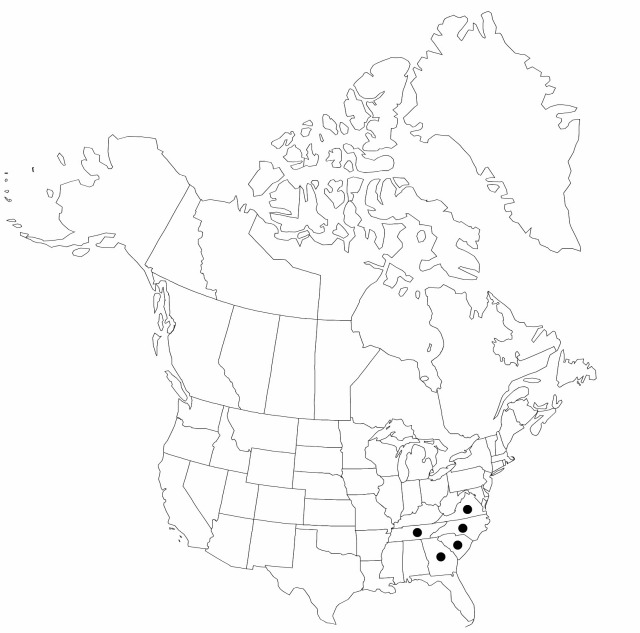Carex ruthii
in N. L. Britton et al., N. Amer. Fl. 18: 112. 1931.
Culms (23–) 30–100 cm. Leaves 3–7 per culm; sheaths tight, inner band hyaline or straw colored, 6–18 cm, apex concave, glabrous; ligules rounded, 1–2.5 mm; blades plicate, 30–70 cm × 1.6–5 mm, widest leaf (2.6–) 2.9–5 mm wide. Inflorescences (2.2–) 3–8.5 cm; spikes 3–8; lateral spikes 3.6–11.2 mm, sessile, pistillate or gynecandrous, staminate portion 2-flowered, to 1 mm, pistillate portion 6–28-flowered, 3.6–11.2 mm; basal 2 spikes (5–) 10–40 mm apart; terminal spike 7–15.5 mm, gynecandrous with staminate portion 3–14-flowered, 2–11 (–14) × 0.8–1.6 mm and pistillate portion 10–25-flowered, 4.1–8 × 6.1–7.7 mm. Pistillate scales ovate, 1.4–2.2 × 1.1–2 mm, apex obtuse to acute. Staminate scales narrowly ovate, 1.6–2.4 × 1.1–1.9 mm, apex obtuse to acute. Anthers 0.8–1.45 mm. Perigynia spreading to reflexed, olive green, 6–14-veined abaxially, 0–5-veined adaxially, broadly to narrowly ovate, (2.8–) 3–4.4 × 1.3–1.9 (–2.1) mm, (1.6–) 1.8–2.5 times as long as wide; beak 0.9–1.75 mm, 0.43–0.85 length of body, serrulate, teeth 0.15–0.35 mm. Achenes ovate, 1.1–1.8 × 0.9–1.4 mm.
Phenology: Fruiting late spring–early summer.
Habitat: Boggy meadows, open or wooded stream banks, springheads, seeps
Elevation: 700–1900 m
Distribution

Ga., N.C., S.C., Tenn., Va.
Discussion
Selected References
None.
Lower Taxa
"shortened" is not a number.
